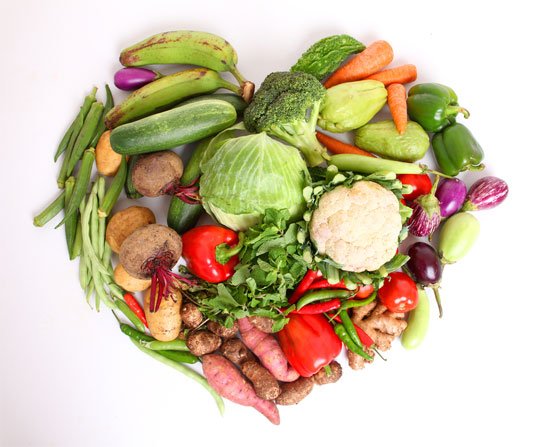Not a “Top Six Hunger-suppressing Foods” post or even a “7 Foods to Control Cravings” post, hunger is the number one reason people fail at dieting so let’s look at another angle on it. One of my client last week asked me why it was so hard to achieve her goals. So we had to take a good hard look at the emotional connection of food as she frowned when I pointed out that while switching to maple syrup is a better choice than cane sugar, continuing to consume an average 34 teaspoons per day is still not healthy yet this is the average teenager consumption in the US.
We have to reset our thinking about foods as reward.
Meaning eating for pleasure rather than for biological needs, “hedonic” (adjective: of, characterizing, or pertaining to pleasure) hunger explains another angle to eating: Why we eat beyond what is good for us—or for that matter, continuing to eat what is not good for us despite known consequences.
The attainment of pleasure is both desirable and dangerous.
 For most of human history we sought food as a daily survival activity. But nowadays in the developed world, food intake occurs for other reasons. “As the growing prevalence of global obesity suggests, an increasing proportion of human food consumption appears to be driven by pleasure, not just by the need for calories,” writes Dr. Michael R. Lowe at Drexel University, Philadelphia, Pa., to describe the coined phrase, “hedonic hunger.”
For most of human history we sought food as a daily survival activity. But nowadays in the developed world, food intake occurs for other reasons. “As the growing prevalence of global obesity suggests, an increasing proportion of human food consumption appears to be driven by pleasure, not just by the need for calories,” writes Dr. Michael R. Lowe at Drexel University, Philadelphia, Pa., to describe the coined phrase, “hedonic hunger.”
This is how the billion dollar junk food industry can extract your hard-earned dollars with the promise of an instant delight. Sugary foods and savory snacks immediately stimulate our nervous system pleasure pathways. They actually do provide an instant “reward,” in nervous system terms.
Food engineering feats meet marketing hedonic hunger genius.
And it works. According to the Centers for Disease Control (CDC) although only 12 percent of adult calories are obtained from junk food, children indulge in a whopping 40-50 percent or more of their daily calories in non-nutritious junk food—calories that provide absolutely no nutritious value. Newly released data from the National Health and Nutrition Examination Study (NHANES) shows that children ages two to 18 get 40 percent of their daily caloric intake from junk foods like soda, sugary fruit drinks, pizza, cakes, cookies, donuts, and ice cream. That’s nearly half of their daily calories, or 800 calories a day based on a 2000-calorie diet.
Half of youth calories came from just six foods:
- Soda
- Sugary fruit drinks
- Grain desserts: cakes, cookies donuts…
- Dairy desserts: ice cream
- Pizza
- Whole milk (the problem—according to the CDC—is its high fat content – sigh)
This is a tragedy for our nation’s children. We are spending billions in healthcare dollars to clean up the hedonic hunger wreckage mass-taught as “good nutrition” to everyone since the 1970’s.
But it is a triumph for the food industry—a business that over the last four decades has mastered the art of making people eat more and more by marketing engineered, non-nutritious and highly-addictive processed foods, as the ultimate delight and healthy too.
In fact, these sugary and poor-quality fatty foods are the cheapest foods you can get, thanks to government subsidies like the $77 billion annually spent to subsidize growing an obscene amount of corn—13 billion bushels on more than 80 million farmland acres—most of which is made into High Fructose Corn Syrup (HFCS) a leading cause of obesity.
There’s a common belief that healthy food is inherently more expensive, and thus can only be for the wealthy. But in fact, healthy food could easily be more affordable for everyone, if not for agribusiness CEOs, their lobbyists and the politicians in their pockets. A quick look at the searchable database maintained by the Environmental Working Group shows that $16 billion annually in checks for subsidies on things like corn, wheat, soy, canola oil, dairy, commercial beef… go not to the small farmer: 90 percent go to agribusiness at offices in big cities. These large commercial farming operations nearly eliminated the small farmer under the “Get big or get out” mantra of the Nixon administration. Their products now make up the largest food commodities and biggest filler components in processed food—even so-called “health food.”
Marketing that (insert junk-food name) will make you happier than you were before.
 Grown at a 500 calorie per person per day surplus, industry had to find a way to make use of mass subsidized food. The General Mills Web site boasts: “There’s nothing silly about the nutrition in Trix cereal.” The cute high-energy, child-appealing rabbit can’t resist the “grapity grape” and other fruity flavors where the second ingredient is sugar and a serving has 11 grams; not to mention the Red 40, Yellow 6, Blue 1, the ever-mysterious “artificial flavor” and the preservative BHT, which has been linked to hyperactivity in children and is suspected of being a possible carcinogen. Despite all of this, for us adults the front of the box reads: “Whole Grain & Calcium Guaranteed.”
Grown at a 500 calorie per person per day surplus, industry had to find a way to make use of mass subsidized food. The General Mills Web site boasts: “There’s nothing silly about the nutrition in Trix cereal.” The cute high-energy, child-appealing rabbit can’t resist the “grapity grape” and other fruity flavors where the second ingredient is sugar and a serving has 11 grams; not to mention the Red 40, Yellow 6, Blue 1, the ever-mysterious “artificial flavor” and the preservative BHT, which has been linked to hyperactivity in children and is suspected of being a possible carcinogen. Despite all of this, for us adults the front of the box reads: “Whole Grain & Calcium Guaranteed.”
Hedonic hunger: We seek pleasure—simply put. And we avoid pain.
“Hedonism” or the doctrine that the pursuit of pleasure is the highest good, has on its flip side the problem of pain.
Overconsumption of high-calorie low-nutrient foods creates addictive responses in the brain. Both sugar and gluten have demonstrated addictive qualities similar to those observed with heroin. Artificial food preservatives have addictive qualities similar to amphetamines and cocaine.
Try to stop these junk food drugs? Just like any other drug and you get the pain of massive cravings and real withdrawal symptoms via known physiological pathways.
To a degree, we are also genetically programmed to eat more than necessary to survive; we have the “thrifty gene.” Our hunter-gatherer ancestors fattened up while times were good which allowed them to survive when times were bad. But in modern society; with the extreme low cost highly caloric junk food available at every convenience store, grocery store, the corner gas station and even the sports event; we have an unending hedonic state—an affluence of immediate-gratification by way of junk food.
We are all born able to make could food choices.
 An extremely radical and interesting but little-known study published in 1939 by pediatrician Clara Davis asks about our intrinsic wiring; can we self-select the foods we need to be healthy? Dr. Davis wanted to know “the adequacy of self-chosen diets as judged by nutritional laws and standards” and “the results in terms of health and nutrition.” She let 15 orphaned infants choose from a selection of 34 foods simply placed in front of them “with no suggestion or motion” by attendant nurses. After an analysis of more than 36,000 meals and self-choices alongside health for up to 5 years, Davis found that not only did the babies eat a varied diet and were well nourished, they seemed to have an innate knowledge of the foods they needed to thrive. A nine-month old with rickets self-selected cod liver oil until his “blood calcium and phosphorous became normal and x-ray films showed his rickets to be healed” and then stopped drinking it. She observed a pattern of losing hunger about 24 hours before becoming sick with the desire for specific foods returning about 24 hours before observable recovery. And even the foods selected were interesting: raw beef, carrots and beets, consistently. These same three foods, carrots, beets and raw beef, were also the most self-selected immediately after weaning—the complete nutritional opposite to 21st century grain-cereal infant recommendations.
An extremely radical and interesting but little-known study published in 1939 by pediatrician Clara Davis asks about our intrinsic wiring; can we self-select the foods we need to be healthy? Dr. Davis wanted to know “the adequacy of self-chosen diets as judged by nutritional laws and standards” and “the results in terms of health and nutrition.” She let 15 orphaned infants choose from a selection of 34 foods simply placed in front of them “with no suggestion or motion” by attendant nurses. After an analysis of more than 36,000 meals and self-choices alongside health for up to 5 years, Davis found that not only did the babies eat a varied diet and were well nourished, they seemed to have an innate knowledge of the foods they needed to thrive. A nine-month old with rickets self-selected cod liver oil until his “blood calcium and phosphorous became normal and x-ray films showed his rickets to be healed” and then stopped drinking it. She observed a pattern of losing hunger about 24 hours before becoming sick with the desire for specific foods returning about 24 hours before observable recovery. And even the foods selected were interesting: raw beef, carrots and beets, consistently. These same three foods, carrots, beets and raw beef, were also the most self-selected immediately after weaning—the complete nutritional opposite to 21st century grain-cereal infant recommendations.
You are not your genes: “hedonic hunger” exists and you can choose what to do about it.
We have to listen to our bodies, not the commercials. Simply replace the pleasure. Yep sounds simple and it is… but for many of my clients finding that pleasure is a lot more work than they were prepared to take on. It can be a process of exploring and failing a few times. Ultimately it is a control issue, as most eating disorders tend to be (and yes I consider sugar addiction a disorder).
Make a commitment to your personal pleasure and healthful foods needs. Favorite ideas from my clients:
1. Understand your triggers. What situations, places, or feelings make you reach for the comfort of food? Keep in mind that while most emotional eating is linked to unpleasant feelings or emptiness, it can also be triggered by positive emotions. At an early age we are “rewarded” for achieving a birthday, accomplishing a goal, or celebrating a holiday or happy event. We support youth groups selling cookies, candy corn and donuts (I just give them money, thank them for what they do, or help in other ways).
Beyond typical triggers like stress, boredom, or stuffed emotions, we have social influences starting with ill-conceived childhood rewards and even sugary food bribes. It is up to us to recognize and break these patterns.
2. Buy and prepare in advance quick, easy, food to grab when hedonic hunger sets in. Make ahead and freeze or keep healthier options that match the convenience of Chips, Candy, Popcorn, etc. Fruit is a better option and may be a good gradient off the sweet-tooth trained taste buds, then carrot sticks… celery logs with peanut or (better) almond butter and raisins… Keep a crock pot with soup or stew going—one with a healthy amount of healthy fat that also stimulates the nervous system reward pathways. Have something there to answer up to any trigger—eventually they do go away.
3. Log all actual sugar AND sugar-equivalent consumption. While this may play into the pain side of hedonism, it can be quite the eye-opener. Log everything that goes in your mouth if it has any sugar in the ingredients list or could become sugar in your body. Most people don’t realize that so much of what they eat—pasta, white & brown rice, all bread even “whole grain”, alcohol, crackers, chips, etc.—these all turn to sugar in your body. Too many clients tell me they reduced their sugar by not eating cakes, cookies and candy… a great start. For so many clients, though, the sweets are just replaced with starchy cereal-grain foods that quickly turn into sugar. Keeping a log-that-doesn’t-lie can help sort out cravings. And the reward of doing this? Knowledge motivates change and when you truly handle the hidden sugar-equivalents your cravings will decrease if not completely go away.
4. Keep a food and mood log. Go a step further, become a sleuth: For at least a week, keep a complete list of everything you consume AND your feelings both physical and emotional. This helps you understand both directions: which foods trigger sugar/food cravings or other physical sensations and what situations trigger your desire for “reward foods.”
Every time you overeat or feel compelled to reach for your version of comfort food, backtrack to find (and log) your trigger. Usually you’ll find an upsetting event (avoid pain) and sometimes a need to create a delight. Write it all down in your food and mood diary: what you ate (or wanted to eat), what happened, how you felt before you ate, what you felt as you were eating, and how you felt afterward.
Over time, you’ll see a pattern emerge: spending time with a critical friend, stress eating at key deadlines, attending certain types of events. Once you identify your emotional eating triggers, the next step is identifying healthier ways to feed your feelings.
5. Find other ways to feed your feelings. Diets so often fail despite excellent nutritional advice (as opposed to many silly diets I’ve seen). Why? Good advice only works if you have conscious control over your eating habits. If your emotions hijack your resolve, no logical intelligence in the world will help.
You have to find other ways to fulfill yourself emotionally. If you have done the huge first step of finding your triggers, next we turn to finding alternatives for emotional fulfillment.
Favorite alternatives to emotional eating from my clients to you:
 Carefully choose someone to call—a friend who is positive. Don’t necessarily ask them to listen to problems or even explain. See if you can just “catch up over lunch” or coffee or a walk… You may have the biggest thing in the world bugging you. Fine. Just enjoy your friend with your attention fully on being with that friend. The point is to “get unstuck” from the thing bothering you, not bring it into more of your day.
Carefully choose someone to call—a friend who is positive. Don’t necessarily ask them to listen to problems or even explain. See if you can just “catch up over lunch” or coffee or a walk… You may have the biggest thing in the world bugging you. Fine. Just enjoy your friend with your attention fully on being with that friend. The point is to “get unstuck” from the thing bothering you, not bring it into more of your day.
If you’re exhausted, believe it or not go for a walk while listening to music or looking around at anything and everything, really look. It may not take long to get winded, at first, and the activity may go from pleasure to uncomfortable. Dance to your favorite song. Exhaustion when you’ve had enough sleep is another mechanism entirely. Movement helps.
Get some self-love. Treat yourself with a hot cup of tea, a long hot bath, a good book, watch a comedy show, explore the outdoors, or turn to an activity you enjoy (woodworking, playing the guitar, shooting hoops, scrapbooking, etc.)
Get a year-long gym membership. Why a year? Because then you make a commitment to yourself and you will find yourself eventually keeping it.
And my personal favorite? Get the support of your friends and family to do these things ANY TIME you want (or at least a set time each day). Going home after working but getting a hunger “I’ve had a bad day need reward” pang? Boom off to the gym (call and let them know). Announce your “personal space” bath as just that—get their agreement that this is “mommy” or “daddy” time. Be the example that it is OK to proactively get your needs met—your rewards come in healthful colors.
Remember, pushing through barriers can create a sense of personal accomplishment, outlook on life and happiness, not to mention weight loss, lower cortisol levels (a marker of inflammation) and needed rest for a pancreas that is working overtime.
Oh, and those old wired habits that fell prey to consumer marketing? They’ll fade, I promise.
[contact-form-7 id=”1851″ title=”Question form blog page”]








Hi! I do not know who you are or how you came by my email address — but I do really like this article and your website, and will subscribe. Thank you.
Hi Genevieve, Wow am I glad you liked the article seeing as it sounds like you didn’t sign up to receive things from me. I have a “double opt in” process and that is the only way I know of for people to get on my list. Truly, I love having a very personal relationship with my subscribers. Enjoy my site and if there is ever a topic you want covered please feel free to let me know.
Best,
Marie Sternquist